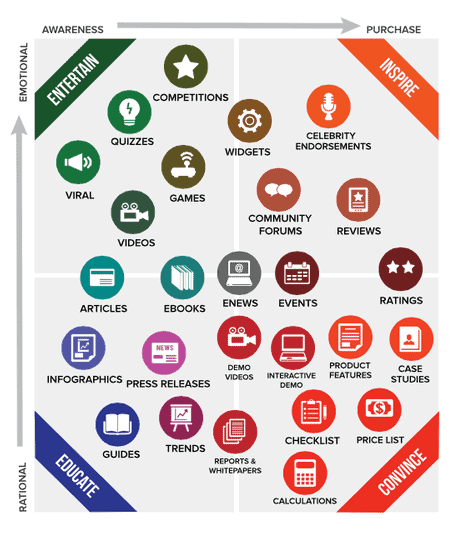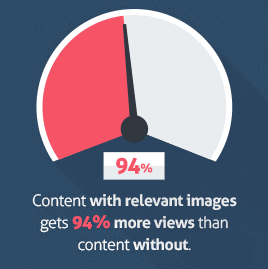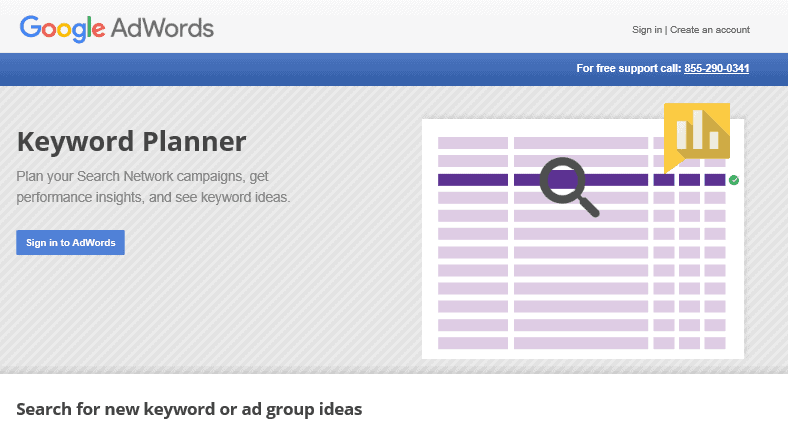It’s accepted wisdom these days that a blog is an important element of any solid business website. Not only does it provide benefits when it comes to SEO and social media, but it also allows prospective customers more insight into the personality, culture, experience, and expertise of a company.
Unfortunately, what’s missing from many company blogs is a clear understanding of what it takes to take a blog from a perfunctory addition to a site to an effective and central element of a strong digital marketing strategy. Over the years, we’ve worked with both B2C and B2B clients across industries to create or revitalize blogs and make them into traffic-driving powerhouses for their sites, so we are intimately familiar with the ins and outs of making a blog successful.
Here is an overview of the 10 most important strategies we’ve found are necessary for successful content marketing via a blog.
1. Start with a strategy.
You wouldn’t approach any other aspect of your business without a strategic plan in place, so why “just start blogging” without first mapping out exactly what the objectives for your blog are, who your audience is, and how you’re going to appeal to them?
First, you’ll want to decide what the purpose of your blog will be. Is it to establish your expertise in your field and position you as the go-to resource for anyone looking for advice on your industry? Is it to show off the goofball, irreverent culture at your company, and attract a loyal following who want to be part of the fun? Maybe it’s primarily to attract traffic to your site via search and social. Whatever your purpose, keep that as your focus, and tailor all content towards that ultimate goal.
Next, you’ll need to determine your audience. Who are you targeting with your content? Develop audience personas and list the types of content that would appeal to them. As an example, one of our clients, Nixplay, sells wifi cloud photo frames. Their audience consists of moms wanting to share pictures with far-flung family members, working parents who want to have a way to stay connected with their children while at work, and travelers who want to share their adventures with those back home. For that reason, their blog often features posts related to parenting and traveling.
Finally, it’s time to get specific. Come up with the types of content you’ll be creating, and note the purpose of each. Smart Insights has a great template for this type of planning:

Once you know what kinds of content you’ll be producing, decide on categories of topics – such as Travel or Parenting – and then list a few examples of actual individual posts, like ‘How To Get Your Toddler To Sit Still for the Perfect Picture” or “Top 10 Travel Destinations To Add To Your Photography Bucket List.’ This will serve as the foundation for a blog that actually produces an ROI.
2. Make headlines a major focus.
No matter how long you spend perfecting each blog post you write, no one will ever read it if the headline isn’t appealing. Think about it. When you’re scrolling through your Facebook feed, or looking through your Google search results, you only stop and click if a title catches your eye, right? You need to make sure that your posts’ headlines are the ones that attract your audience’s attention.
How do you do this? By using tried and true formulas. First of all, make sure your title accurately reflects what’s in your post. Nothing turns a reader off more than expecting one thing and getting another. Next, try one of the tricks of the trade, such as including a numeral in the title, the words “how to,” or a question. You could make it funny or irreverent, or bring in a little pop culture to boost the interest factor. Hubspot even has a Blog Title Generator you can use to come up with effective titles.

Some content marketers say you should spend 80% of your time perfecting your headline, and 20% writing the post. It’s that important.
3. Include plenty of quality, relevant images.
According to Hubspot, content spiced up with relevant images gets a whopping 94% more views than plain text.

The key here, however, is relevance. While stock images have their uses, blog posts with a bunch of stock images thrown in for no good reason won’t do the trick. The images need to be tailored to fit the content, illustrating a point made, giving more detail, or showcasing an example. When words get confusing, images can help clarify what’s meant, providing a better experience for your reader – and a higher chance they’ll be back again and again.
4. Write long, in-depth posts.
Years ago, even blogs with short 300-word posts could be successful. Then 500-word posts became the standard, to keep both readers and Google happy. Now, posts really need to be at least 1,200 words in length – and longer, if possible, up to 5,000 or 6,000 words – in order to truly provide traffic to your site with the kind of detailed information they’re looking for, and let Google know that you’ve put a significant amount of effort into creating a quality post. With so much cookie-cutter content out there on the web about just about every topic imaginable, you need to stand out with lengthy, in-depth posts that are truly helpful.
5. Publish blog posts with consistency.
How often do you post to your blog? Twice a week? Once a month? While more often is better, what matters even more than frequency is consistency. If you post twice a week for a month, but then peter out and don’t post at all for a few months, your blog’s ROI will suffer far more than if you had published one post per month consistently. Letting a blog go silent for any length of time gives the impression that something is wrong, while keeping to a regular posting schedule inspires confidence.
6. Choose the right voice.
In your content marketing strategy, you determined who your audience was and what topics would speak to them. It’s just as important to decide what kind of writing style, or voice, will appeal most to them, as well. Are you a B2B company offering business advice? Then a professional, no-nonsense voice and tone is probably most appropriate for your blog. Are you a B2C company selling products to teens? Then you want to have a fun, peppy voice that incorporates plenty of humor. Choosing the wrong voice can be disastrous. Even if your topics are on target, a boring or inappropriate voice can lose you traffic after the first few sentences. A unique voice that fits your audience perfectly, however, can ensure you stand out from the crowd.
7. Make yourself indispensable with valuable content.
No matter what you Google these days, you’re almost sure to get thousands of relevant search results – and most of them will feature pretty similar content. Your blog needs to give prospective customers a reason to come back again and again – to view you as the go-to resource in your industry, providing a fresh, unique take on industry issues, and in-depth, valuable advice and guidance for problems. By consistently writing truly helpful posts for your target audience, you’ll create a name for yourself as an industry leader, which will boost your blog’s ROI considerably.
8. Optimize your posts for SEO.
In order to be found on Google in the first place, however you’ll need to make sure your posts are optimized for SEO. This means using tools like Google’s Keyword Planner to determine which search phrases are actually being used to search for products and companies like yours, and then incorporating those into your posts – especially the titles.

It also means doing everything you can to make each blog post as reader-friendly as possible, with links to other helpful, relevant blog posts on your site, as well as links out to other respected industry sites when warranted. Getting Google on your side is a surefire way to boost ROI.
9. Get the word out about each post.
Once a post has been published, your work is still far from done! You’ve got to spread the word among your target audience that you’ve published a new post, and drive traffic there yourself. Share the link on all your social media channels, and send it out in your email newsletter. You can even tag industry influencers that you mention in the post, or drop them a line letting them know you’ve featured them, and see if they’ll share it with their own audiences. Ask every employee, every vendor, every client to share your posts with their networks, if you want to get the highest possible ROI from each individual post you write.
10. Check those analytics – and respond accordingly.
Finally, you’ll want to keep a close eye on the analytics for each blog post. Which topics bring you the most traffic? Which posts have led to conversions? Every time you write a new post, refer to the data first, to make sure you’re learning from your successes, and building upon them. You can even use the knowledge you glean from the numbers to tweak existing posts, adding information or changing the titles to make them more appealing. By taking what you’ve done and using it to inform your strategy going forward, you’re sure to skyrocket your content marketing ROI.
We use these ten content marketing strategies every day with our clients with great success – and you can achieve the same results. A blog is so much more than just one more element of a site to keep up with – when approached strategically, it can be a decisive factor in boosting your overall marketing ROI.







